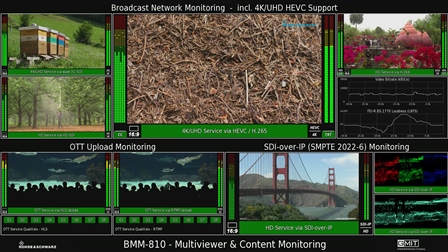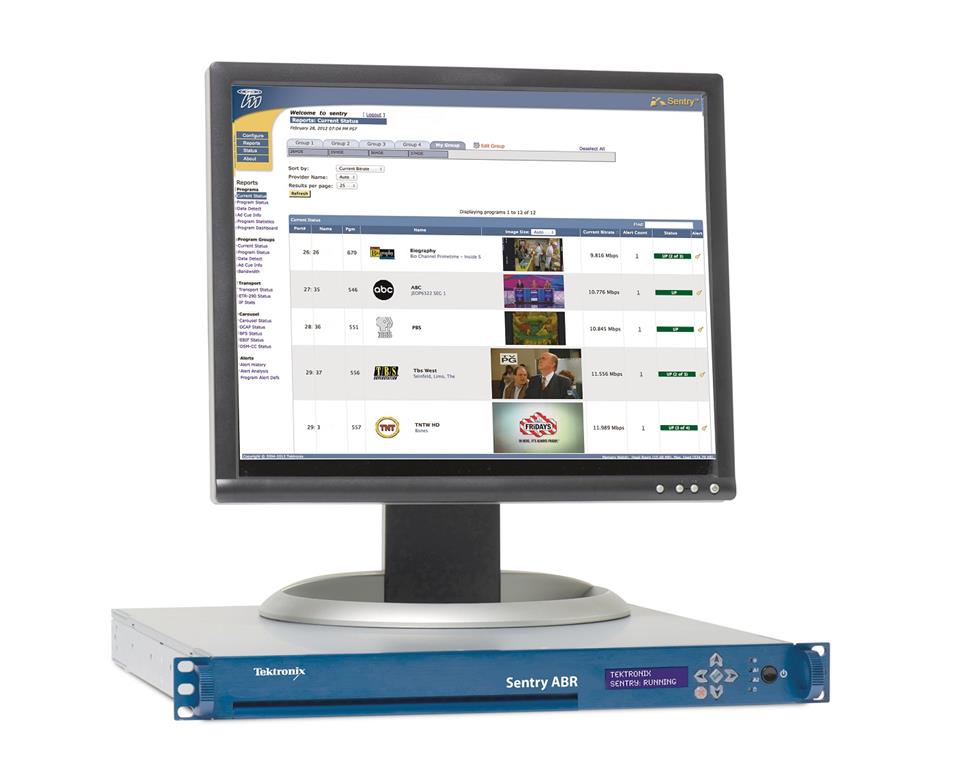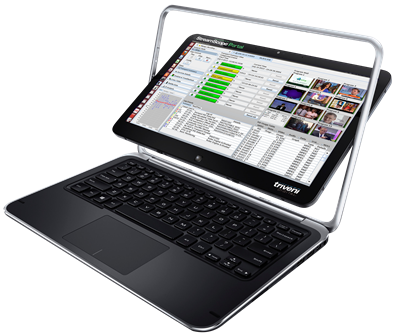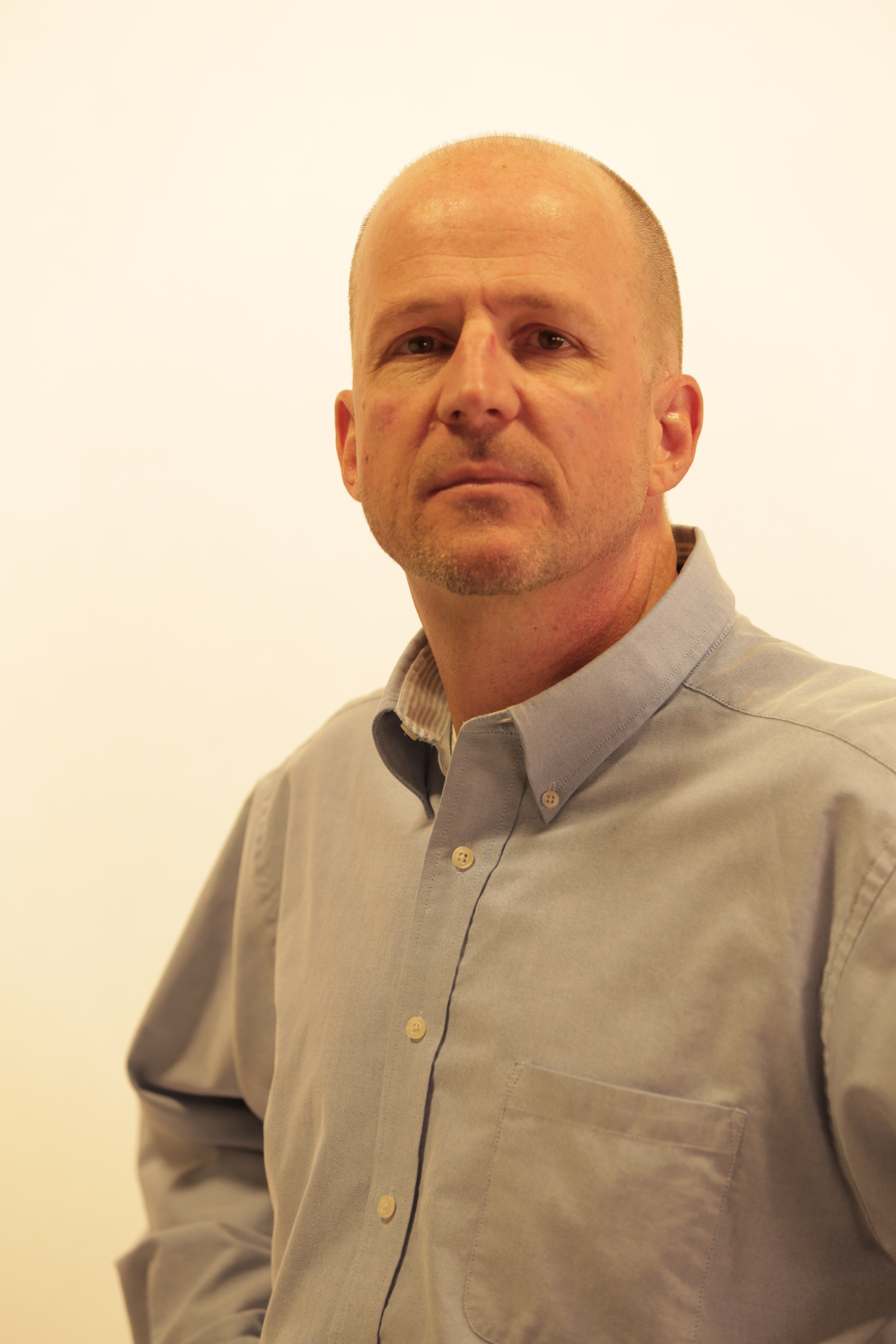Test and Measurement Expands its Scope
NEW YORK—Five years ago, TV Technology published an article on test and measurement, highlighting how manufacturers were helping broadcasters meet the challenges of the HD transition with new hardware that took large rack-based systems and reduced them to palm-sized appliances. Fast forward half a decade and hardware is no longer key, as manufacturers opt for new software-based solutions and drop traditional product lines.
“I have never seen so much change happening in such a short space of time,” said Ian Valentine, business director of video products at Tektronix in Beaverton, Ore. A long time media industry veteran, Valentine attributes the change to new enabling technologies provided by software. “The dynamics of our industry from a command perspective are changing; what you see happening is much more distributed and remote management,” Valentine adds.
MORE DISTRIBUTION CHAINS
From broadcast hubs remotely controlling station MCRs to large cable MSOs, content is delivered today via more varied delivery systems to a wider assortment of devices.
Companies are leveraging their software expertise to help manage an increasingly complex product distribution chain. For the major players in the program origination arena like NBCUniversal, Discovery, Fox, and multichannel OTT distributors such as Netflix and Hulu, it is becoming more difficult to manage video and audio quality over such vast distribution chains.
Adam Schadle, vice president for Video Clarity in Campbell, Calif., sees today’s monitoring needs as a combination of best practices. “The old school way of guaranteeing quality product was to have experienced engineers monitoring complicated hardware at the signal origination point, which we still advocate for,” he said, “but new technologies now help with the big job of managing multiple distribution channels all the way through to delivery.”

Rohde & Schwarz BMM-810 monitor
“Innovative use of advances in both hardware and software to solve real customer problems, like monitoring both traditional and streaming channels in the same system is key,” said Greg Kregoski, business development manager for Rohde & Schwarz USA. The German-based test and measurement company believes that it is important for video and content delivery methods to keep pace with IP technology in order to keep up with consumer demands. Tektronix, likewise, sees IP and new distribution chains the same way. “We as an industry have to be one step ahead of where our customer base is so we can be ready to help them get their product to market,” added Tektronix’ Valentine.
Get the TV Tech Newsletter
The professional video industry's #1 source for news, trends and product and tech information. Sign up below.
There is a new approach now to T&M and it encompasses not only new technology, but new methodologies to ensure product quality. Bob Mills, senior product manager for Imagine Communications in Dallas, envisions a more end-to-end approach with not only object but perceptive measuring being done.
“There needs to be a more cohesive and holistic look at the delivery chain,” Mills said, adding that he sees the need for both traditional qualitative measurements during production and origination to the more recent entrant of Quality of Experience (QoE) measurements via remote probes located throughout the chain.
All of these issues will have a major impact on broadcasters in the future. From dealing with new distribution chains like the cloud, to new formats such as 4K and HEVC, facilities will need to continually evolve their testing abilities in order to manage the quality of their offerings. With traditional test and measurement companies adapting to IP analysis and software-based monitoring companies adding more testing capabilities to their product lines, there are evolving routes to take, depending on what the broadcaster or originator sees as the best way to monitor the delivery of their product to the consumer.

Video Clarity’s RTM offers a side-by-side comparison of a master reference image to an image from any targeted resolution either in real time or a file-based environment.
DEFINING ‘QUALITY’
Due to the fact that program material is now often consumed in formats and sizes greatly differing from its original essence, new quality control standards are being developed to help provide guidance. Two of the newer terms are “perceptive measurement” and “Quality of Experience.” These are the efforts to compare a final product to an original. Video Clarity’s RTM and Clearview product lines allow a side-by-side comparison of a master reference image to an image from any targeted resolution either in real time or a file-based environment. This allows a subjective measurement of whether the product in its final form has the expected quality. “These products allow the user a look at the images side-by-side interactively for perceptive comparisons,” notes Kregoski.
Tektronix’s Valentine has seen a rapid shift from Quality of Service (QoS) concerns to Quality of Experience as well, especially for high-volume monitoring. His company offers solutions for both file-based and streaming measurement through its Cerify and Sentry platforms. These IP-based measurement tools are not only able to monitor up to 250 simultaneous channels, but can also tackle the analysis of adaptive bitrate streams.
Whether one is a satellite, cable or even multichannel broadcaster, the use of monitor walls is now commonplace in origination facilities. Once used to just keep track of all these channels, these systems are now tasked with providing guidance on signal quality. Rhode and Schwarz offers the BMM-810 monitoring solution, which is of special interest to broadcasters and OTT originators, as it allows them to decode multiple streams of broadcast signals and compressed streaming services in one device. This hybrid monitoring platform offers in-black, loss of video, and audio alarming, as well as integration into facility SNMP systems.

Tektronix Sentry
THE SIMPLIFIED INTERFACE
Whether monitoring 250 channels at once, or just four, vendors are keenly aware that there is a need for signal monitoring in more places. “People like the depth of test and measurement equipment, but don’t use all of its functionality every day, so they often have to refer to a huge manual to find the settings they need,” said Ralph Bachofen, vice president of sales for Triveni Digital in Princeton Junction, N.J. He notes that some multiviewer monitoring systems offer a “check engine light” functionality, which only lets the user know there is a problem, rather than what that problem is. “We provide alarming, but also a simplified user interface with plenty of detail,” said Bachofen. Triveni’s Streamscope RM40, which includes options for logging analytic and CALM data, also demonstrates ease of use by its app for mobile devices. For full-featured portability, Triveni offers the Streamscope Portal, a touchscreen tablet/laptop which takes the same MPEG file and stream monitoring capabilities onto a mobile platform for taking the test to where it’s needed.
Imagine’s Millis believes that there is value in digging down deep, but also in providing a broader overview and sampling. He believes “light and moderate” testing of video, audio, and lip sync to get a quick sense of programming quality is a key feature that customers are looking for. He sees the industry moving away from deep signal analysis to “a broader overview of a workflow from origination through all paths of distribution.”

Triveni Digital Streamscope Portal
CURRENT NEEDS VS. FUTURE REQUIREMENTS
Five years ago handheld test devices were “must have” items, but today, manufacturers like Imagine Communications have ended the life of some of these long-running product lines completely, in favor of software-based analysis and remote monitoring. The evolution of the industry itself continues with new standards such as ATSC 3.0 and HEVC playing a major role in choosing test and measurement equipment for broadcasters and OTT distributors alike. With the new generator of IP broadcasters such as Netflix, Google, and Verizon, who have both the ability and plans to deliver 4K media, the testing industry will have to continue to evolve their products for both industries.
One can only imagine five years from now which media industries and products will win out, and what level of sophistication and depth on analysis may be available. With talk of intelligent analysis and more automation, the products of 2019 will undoubtedly look a lot different from those of today.

